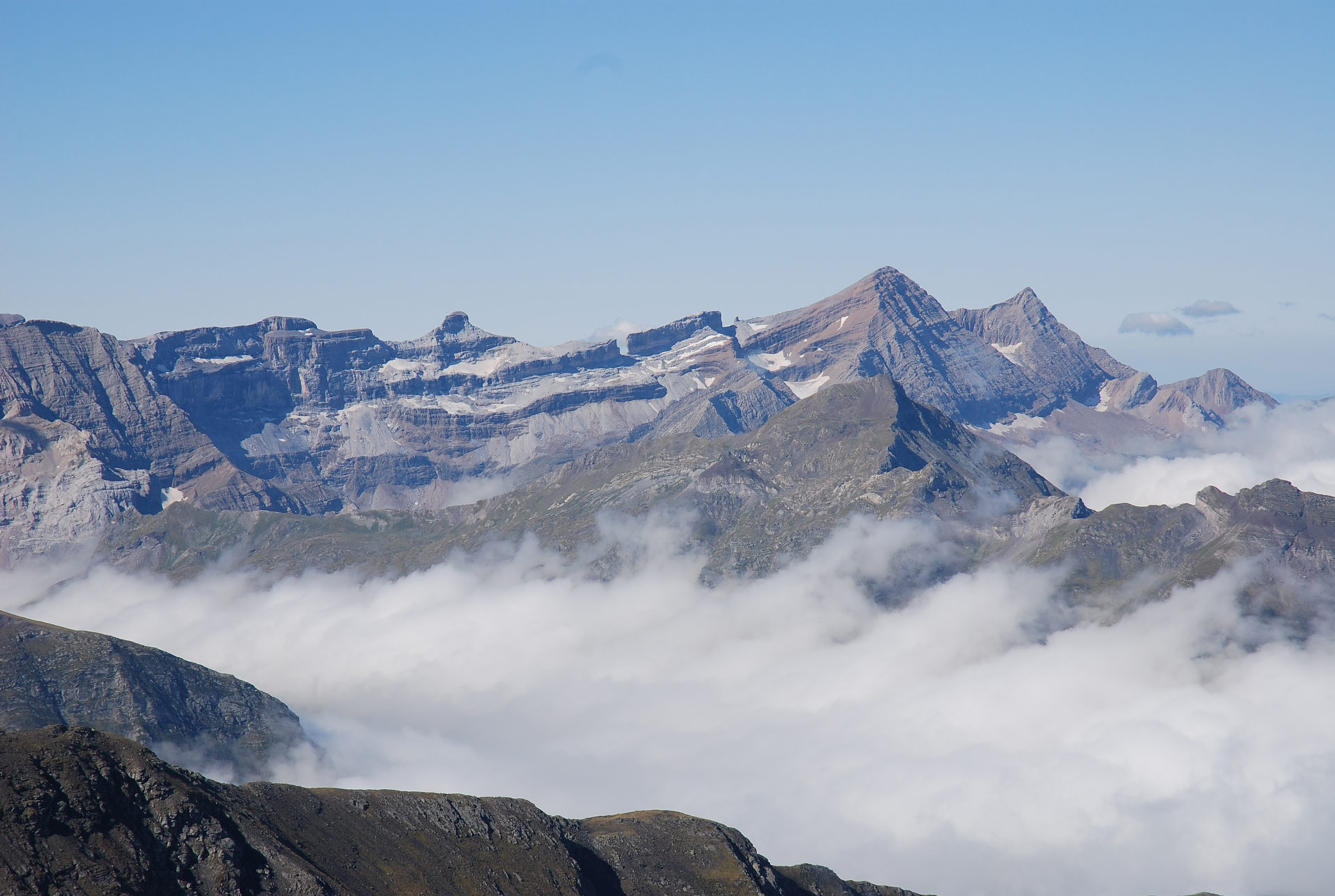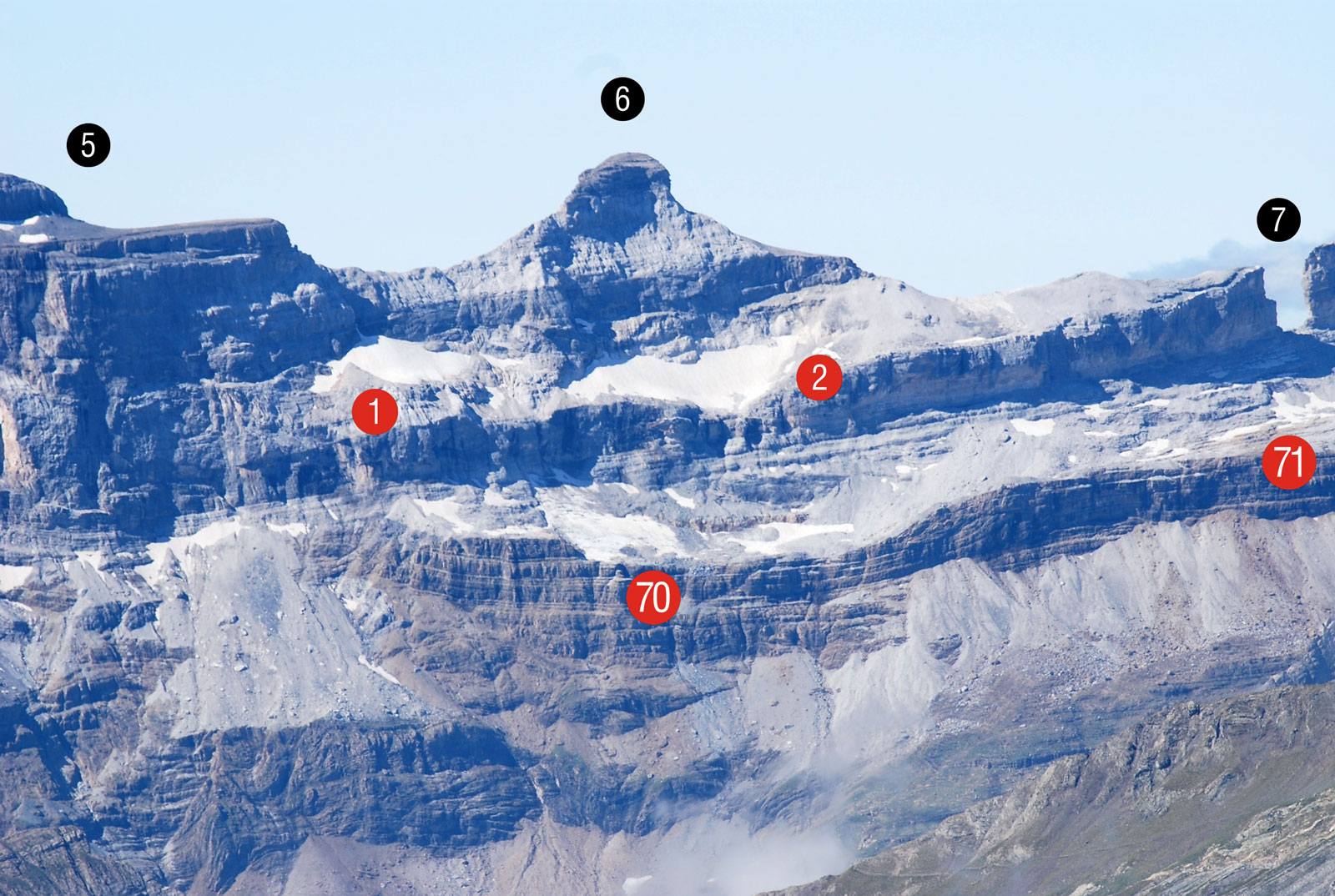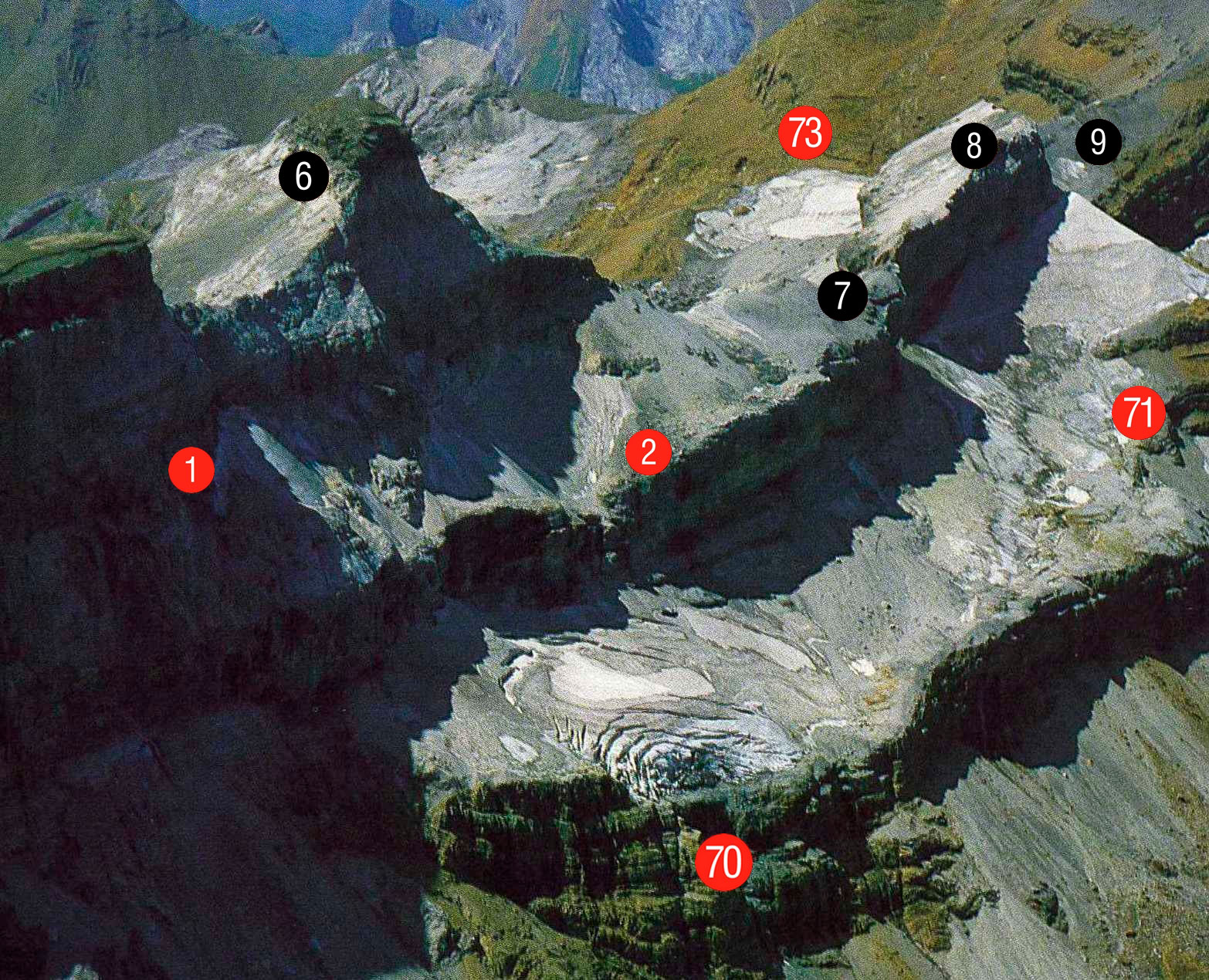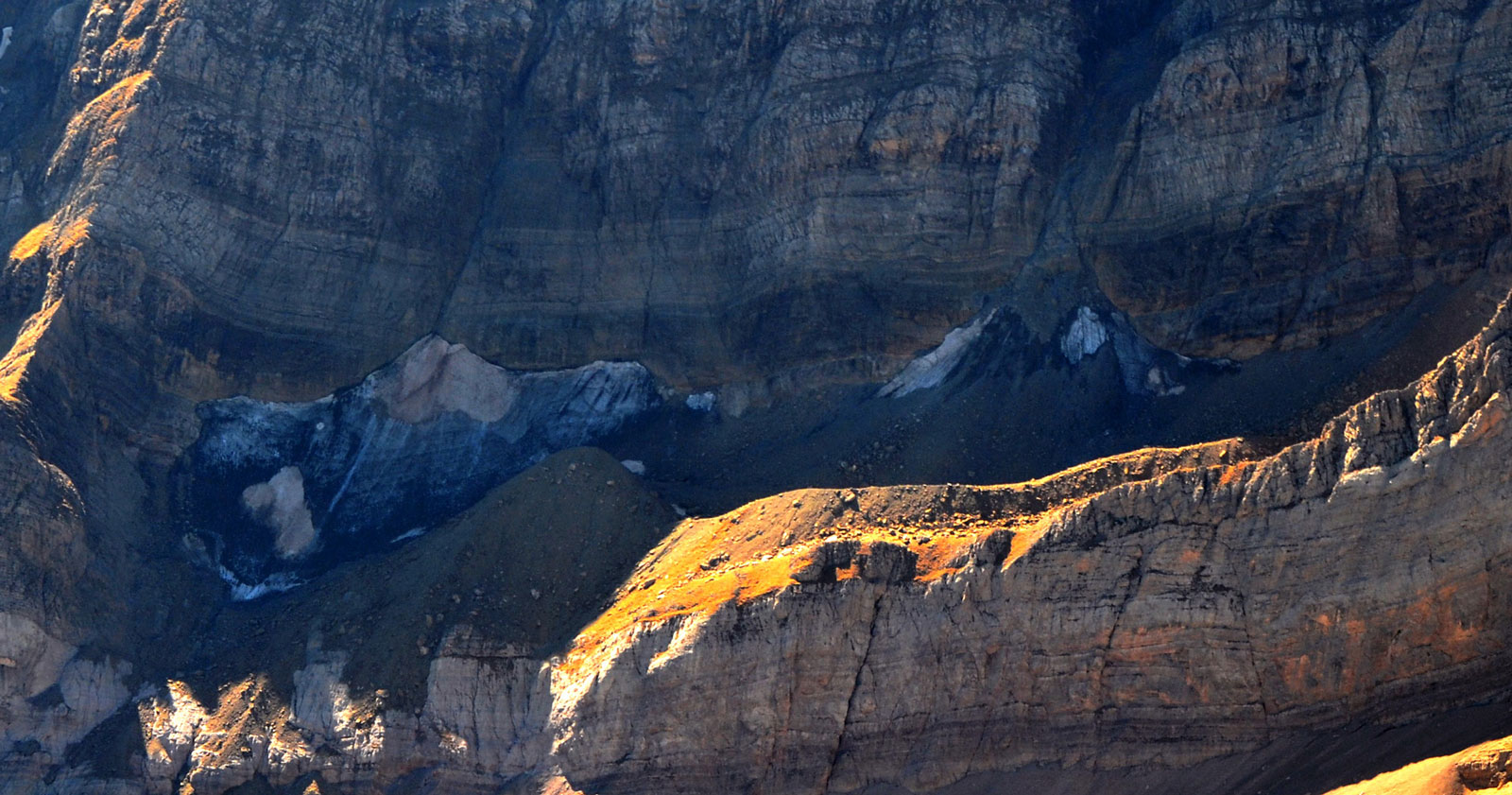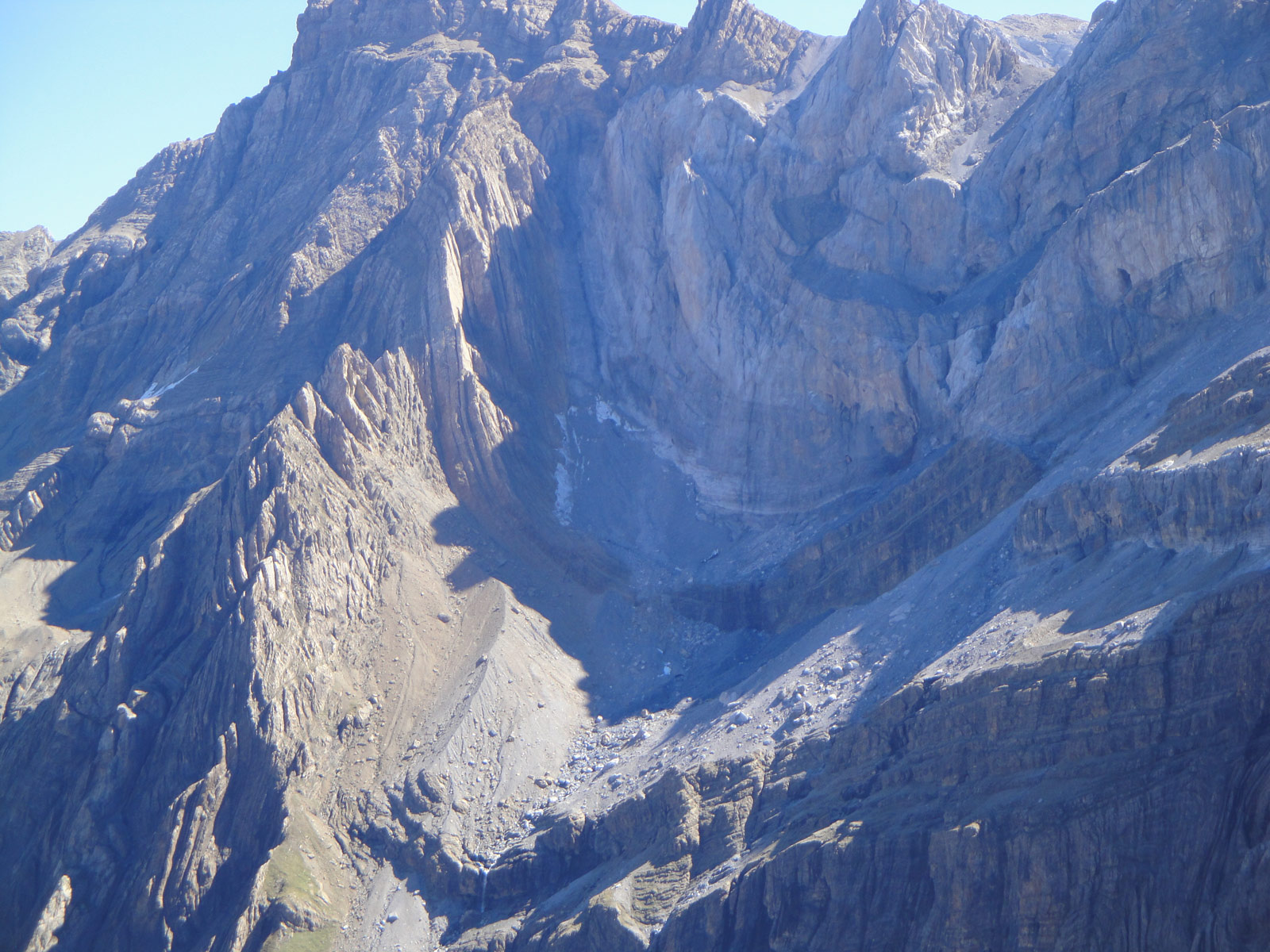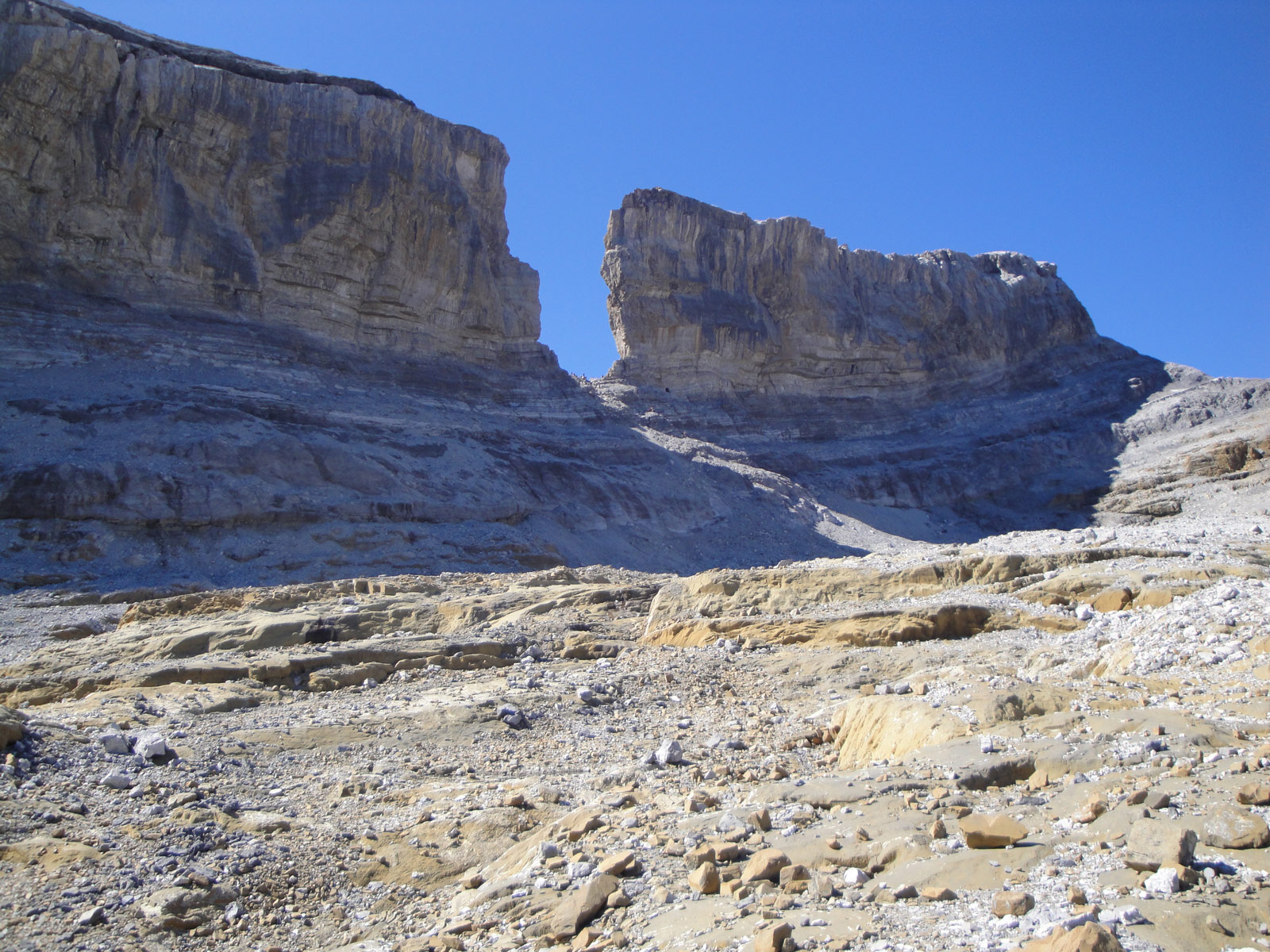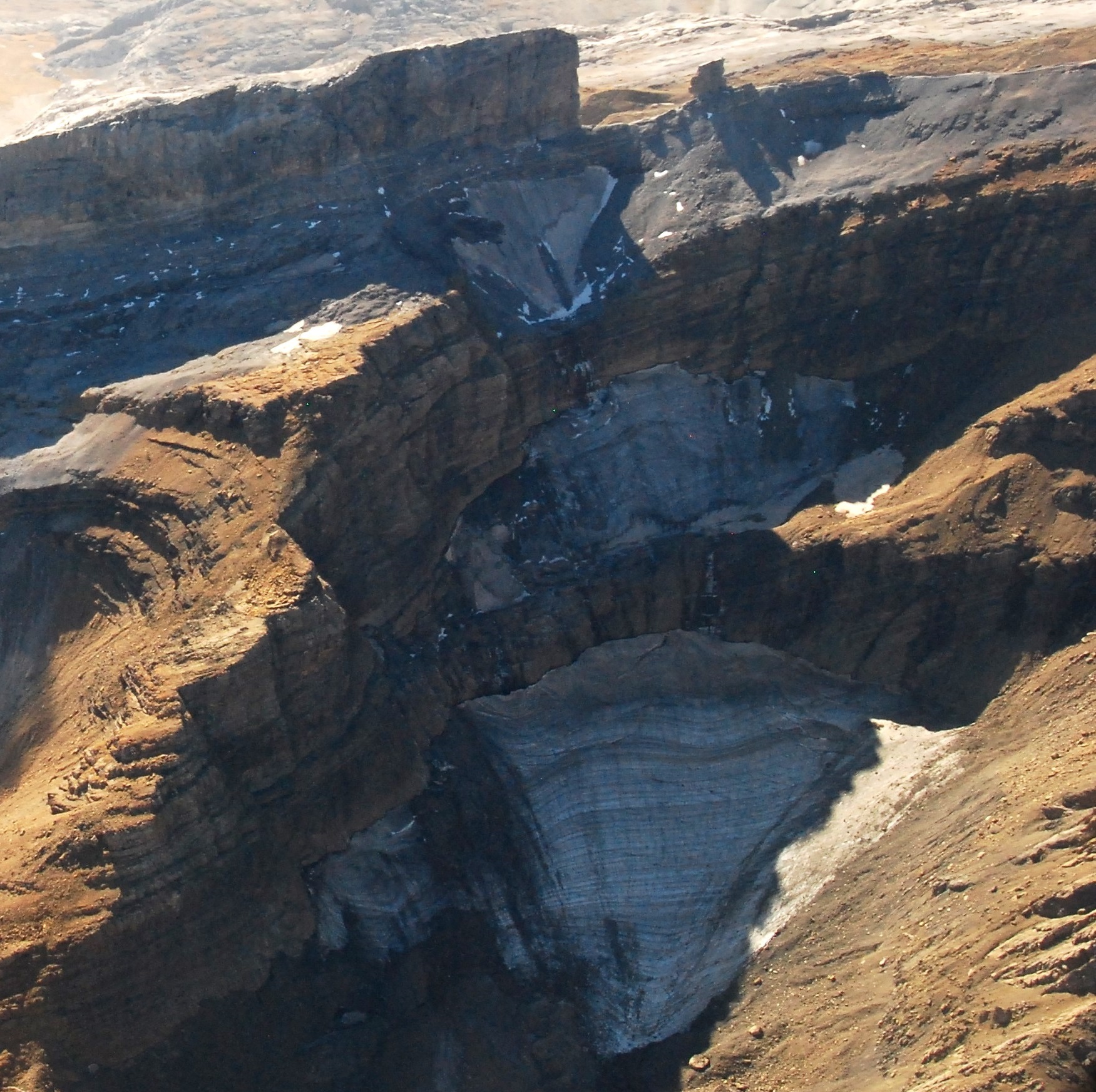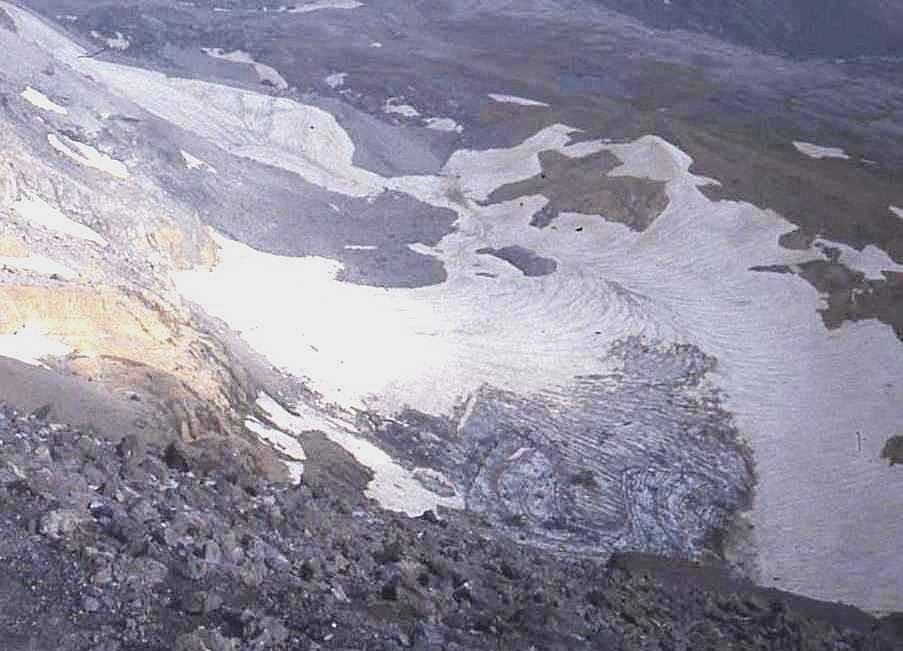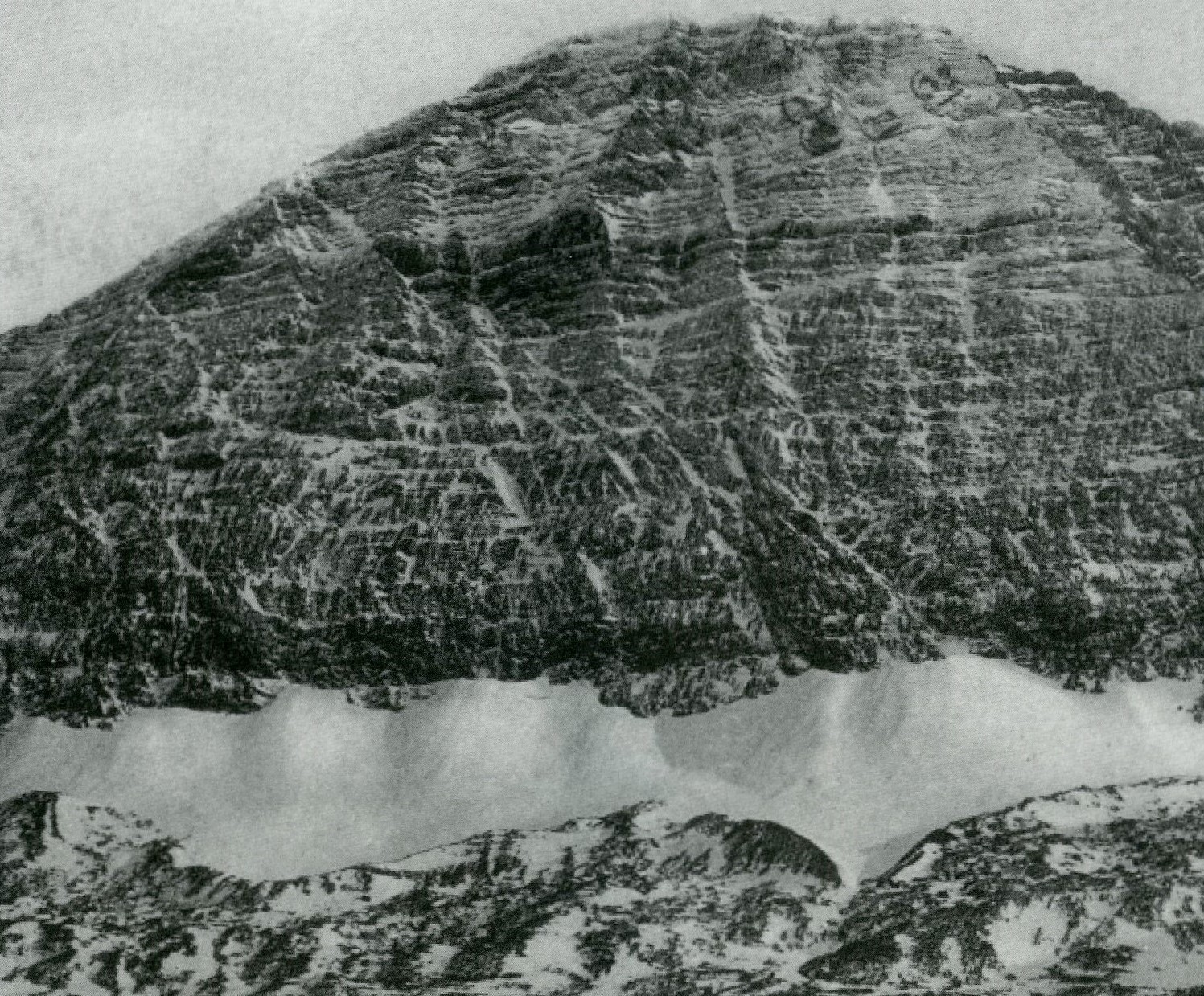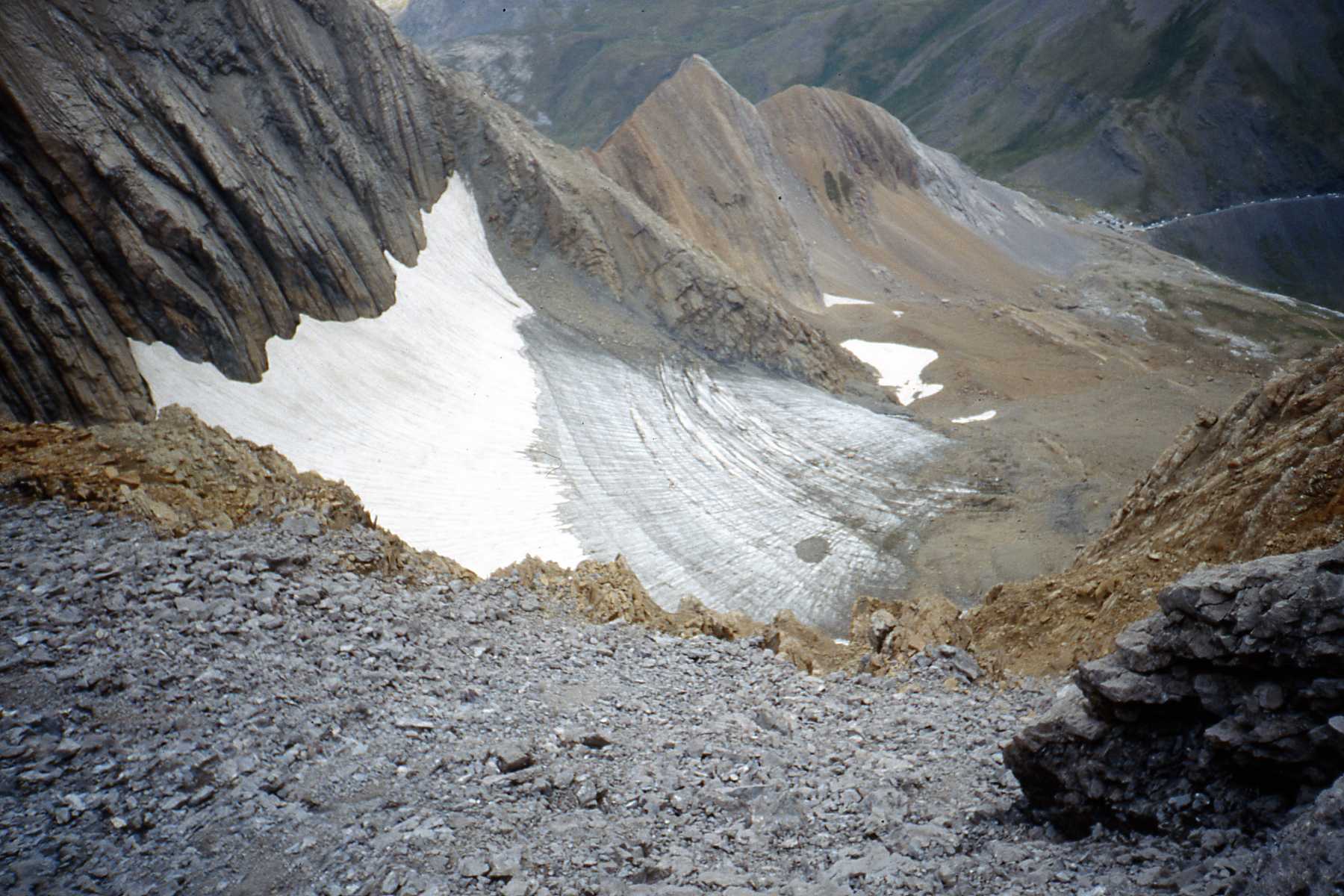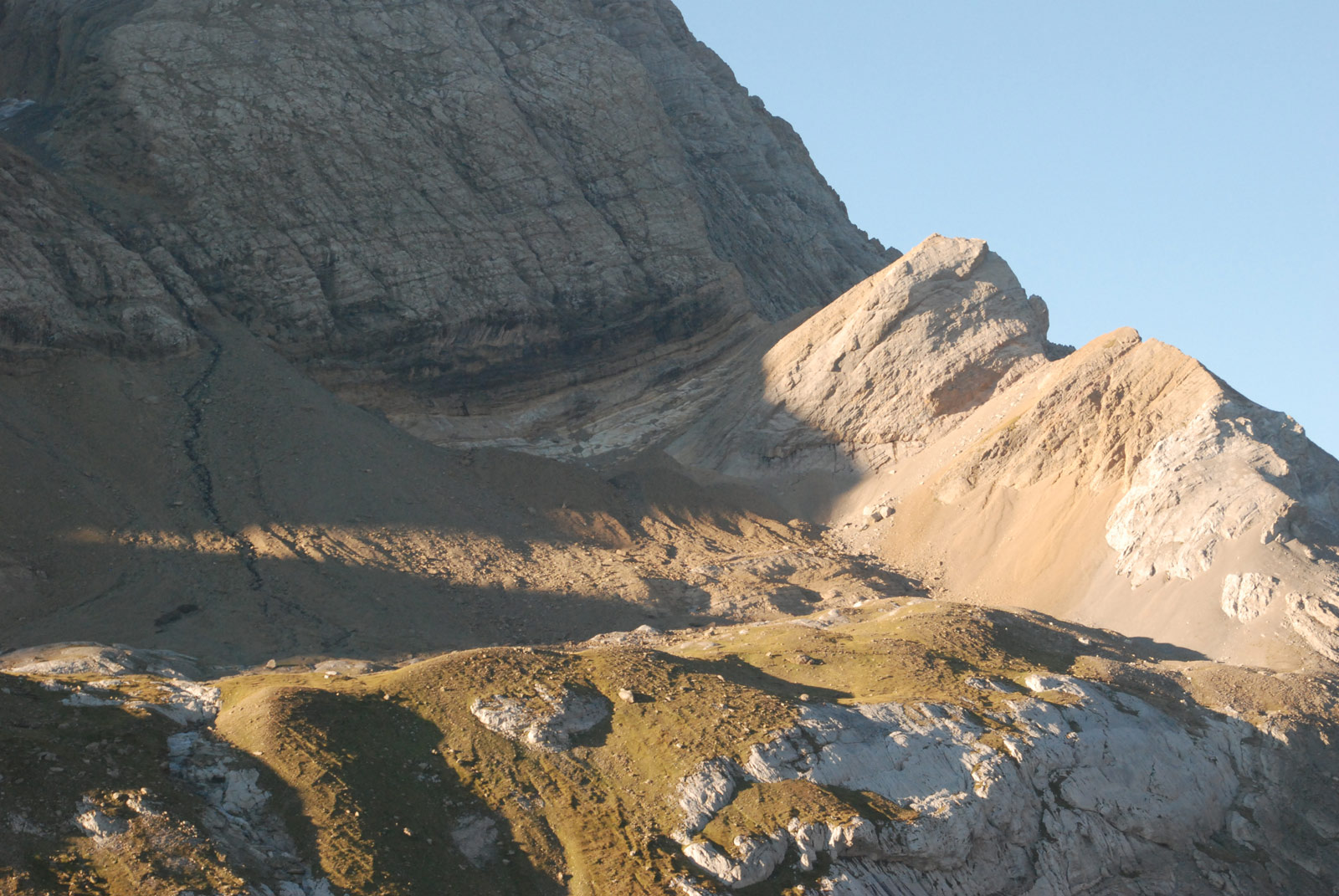The main body of the Casco icefall is located about 350 m below the summit of the same name (3,006 m), slightly to the east of its vertical. It occupies the steps of the old Rolando Brecha Glacier, although at a slightly lower altitude, as this platform loses height towards the east. During the Little Ice Age, it reached a length of 375 m in two steps. The main fragment is located in the lower step, while two glaciers precariously remain in the upper step. Its head width was 1,360 metres during the Little Ice Age, forming a single unit with the Brecha de Rolando glacier. This made it the fifth largest in the Pyrenees in terms of head width.
In the decade from 1975 to 1985, it was a dynamic suspended glacier with considerable ice thickness and crevasses. Its powerful front gave rise to seracs, which were unable to settle on any of the lower steps to regenerate the glacier, given the verticality of the terrain.
Currently classified as a helero, in 2022 the lower fragment retained a considerable thickness of ice under the cover of erosion debris, which was minimised during the hot summer of 2023. In 2024, a helero remained covered by snow. On the upper step, both heleros are in a practically residual state. The whole area covers a total of 0.9 ha.
Este aparato glaciar pertenece al siguiente macizo:


